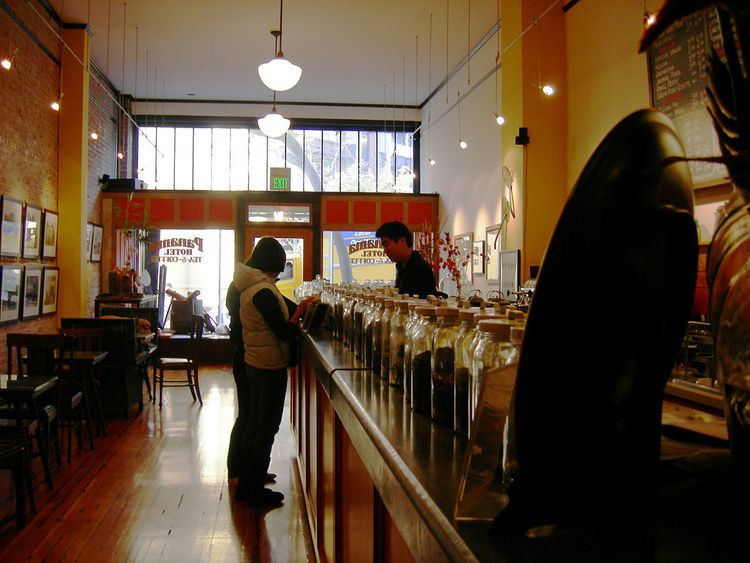NRHP Reference # 06000462 Designated NHL March 20, 2006 | Added to NRHP March 20, 2006 | |
 | ||
Location 605 S. Main StSeattle, Washington | ||
The Panama Hotel in Seattle, Washington's International District was built in 1910. The hotel was built by the first Japanese-American architect in Seattle, Sabro Ozasa, and contains the last remaining Japanese bathhouse (sento) in the United States. The Panama Hotel was essential to the Japanese community, the building housed businesses, a bathhouse, sleeping quarters for residents and visitors, and restaurants. Since 1985 the Panama Hotel has been owned by Jan Johnson. Johnson, the third owner of the Panama Hotel has restored the building to emulate its' previous condition before the evacuation of the Japanese in Seattle. Johnson has closed off the basement that holds the belongings of the Japanese families to the public, and has installed a glass panel in the floorboards for visitors to view the artifacts from above.
Contents
- Seattles Japantown Nihonmachi
- Japanese Bathhouses Sento
- National Landmark
- The Panama Hotel Film
- References
The Panama Hotel is known for the rich Japanese American history before and during World War II. The hotel is known for housing the belongings of the Japanese families in Seattle once Executive Order 9066 was enacted and the evacuation of Japanese to internment camps. After the Japanese internment, most of the Seattle-based families were not able to return due to death, financial constraints, and relocation; their belongings still reside in the basement of the hotel.
It is also known as being the namesake of the novel Hotel on the Corner of Bitter and Sweet by Jamie Ford.
Seattle's "Japantown" (Nihonmachi)
Located in the International District of Seattle, multiple districts were formed during the early 1900s based on race and ethnicity. Seattle's "Japantown" (Nihonmachi) community was established to keep races segregated, but it allowed cultural bonds to be formed. Japanese immigrants from all the regions of Japan came to Seattle and became interconnected because of the Nihonmachi. Even though the Japanese people of Japantown faced poverty due to economic hardships, skilled workers in all different industries came together because of the immigration from different prefectures in Japan.
Japanese Bathhouses (Sento)
The Panama Hotel was one of the focal points in Japantown before World War II. The hotel was known for the Hashidate-Yu, one of the four bathhouses(Sento) in Seattle during the early twentieth-century. Separated into two areas, one for men and the other for women and children, these bathhouses were essential in the Japantown because most of the residents did not have access to facilities in their residents. The bathhouses allowed people to interact with one another and spread their culture with the locals or visitors from other countries.
National Landmark
It was declared a National Historic Landmark building in 2006, and on April 9, 2015, the Panama Hotel was designated a National Treasure by the National Trust For Historic Preservation - one of only 60 in the United States.
The Panama Hotel Film
The Panama Hotel Legacy is a film currently in production that will explore the unique history of the 105 year-old property and the continuous stewardship to preserve its history and educate current and future generations.
The film will detail the building's influence in place, culture and community, the ongoing preservation efforts for the Panama Hotel including the Hashidate Yu Sento, one of the most well-preserved bathhouses in the U.S. and the archiving of Japanese Americans' belongings stored in the hotel as a result of Executive Order 9066 issued by President Roosevelt in 1942.
